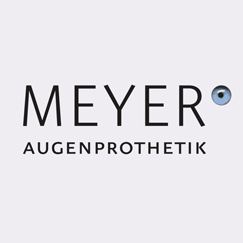Aristotle (384-322 B.C.) even mentioned puppets with movable eyes.
French surgeon Ambroise Paré (1510-1590) described two types of artificial eyes: the painted ecblepharon (presentation eye) and the more realistic looking hipoblepharon placed under the lids (inserting eye). As far back as 1623, glass eyes appear to be totally known to the Venetian surgeon Hieronymus Fabricius. This art, which was initially probably only practiced in Venice, spread during the 17th and 18th centuries to central Europe. About 1655 glass eyes were found in Lyon, their visible side fire-painted in different colours. Lead-covered reverse sides provided the eye with a harmonious inner surface.
In 1749 Phil. Adam Haug describes artificial eyes in his doctoral thesis as “beautiful and deceptive”. As a culture and art metropolis, Paris at the time had taken the lead in the production of glass eyes. The glass, coloured white with lead oxide, was extremely soft and turned rough quickly. These artificial eyes were nonetheless in high demand in the whole of Europe and people paid high prices for them, as Hazard-Mirault reported in 1820.
Aristotle (384-322 B.C.) even mentioned puppets with movable eyes.
French surgeon Ambroise Paré (1510-1590) described two types of artificial eyes: the painted ecblepharon (presentation eye) and the more realistic looking hipoblepharon placed under the lids (inserting eye). As far back as 1623, glass eyes appear to be totally known to the Venetian surgeon Hieronymus Fabricius. This art, which was initially probably only practiced in Venice, spread during the 17th and 18th centuries to central Europe. About 1655 glass eyes were found in Lyon, their visible side fire-painted in different colours. Lead-covered reverse sides provided the eye with a harmonious inner surface.
In 1749 Phil. Adam Haug describes artificial eyes in his doctoral thesis as “beautiful and deceptive”. As a culture and art metropolis, Paris at the time had taken the lead in the production of glass eyes. The glass, coloured white with lead oxide, was extremely soft and turned rough quickly. These artificial eyes were nonetheless in high demand in the whole of Europe and people paid high prices for them, as Hazard-Mirault reported in 1820.

